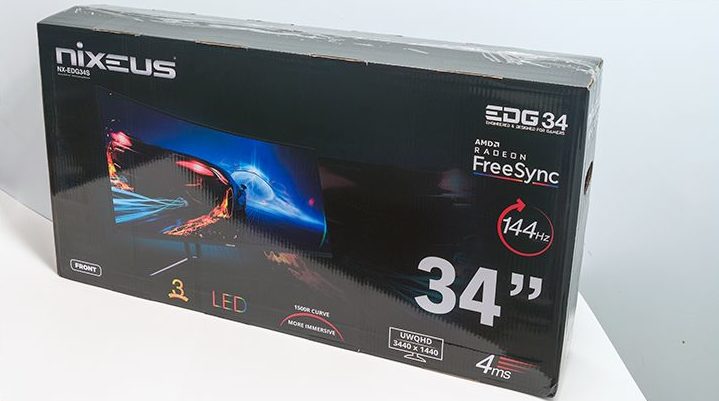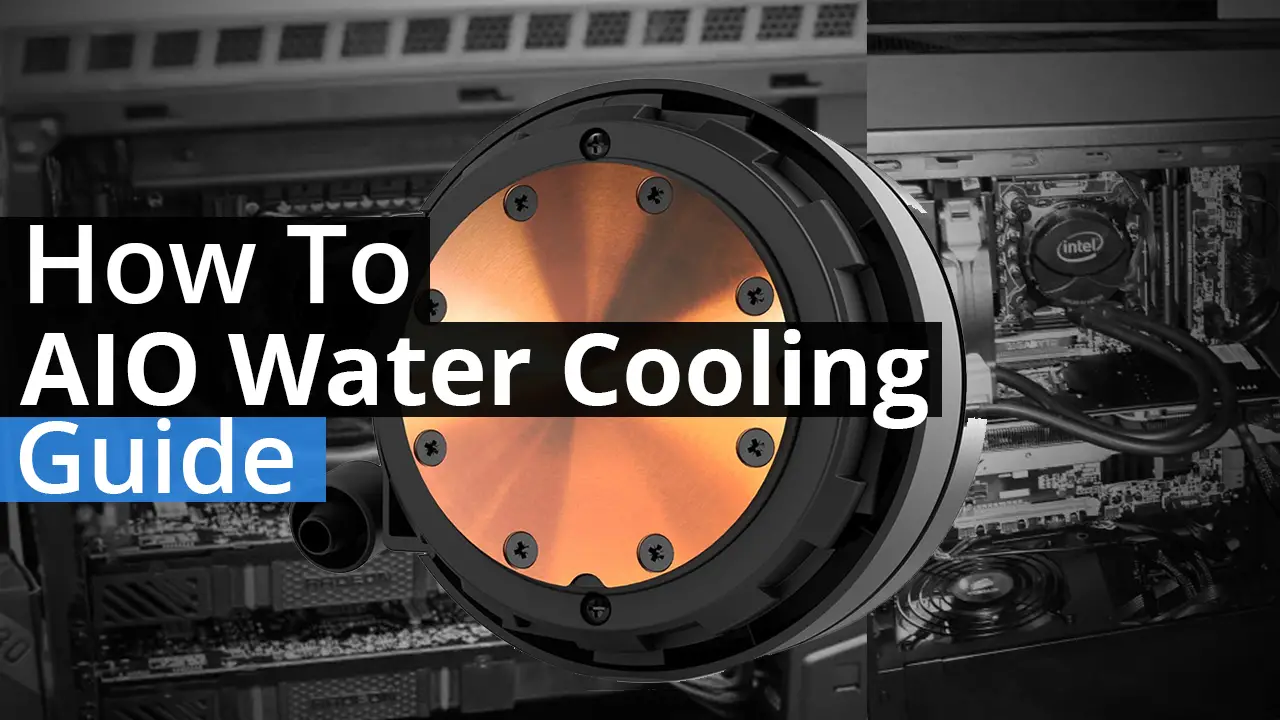
It should come as no surprise that the shipping container the Nixeus NX-EDG34S comes in is… well… massive. We have literally had weapons systems come in smaller boxes. On the positive side, Nixeus has put all this space to very good use. The front showcases the actual monitor housed inside nicely. The back is covered in details, and generally speaking this box is attractive and eye catching in an understated and conservative manner. This is refreshing as typical ‘PC gaming’ monitors try and speak to the inner child via over the top color schemes and bold statements in garish fonts. Instead of that this box lets its specs, and dimensions, talk for it. Just the way we like it.

Consisting of copious amounts of Styrofoam, which complete encase the Nixeus NX-EDG34S, the internal protection is also top notch.

Considering the asking price the included accessories are rather impressive. In addition to the usual (easy to understand) pamphlet and power cable, Nixeus also includes a DP 1.4 cable and wall mounting brackets. This is above average to say the least as we have seen 1K plus monitors not go that extra mile. The only minor quibbles are the power cable is a bit thin and no HDMI cable is included. We understand why no HDMI is included (as you really, really want to use a DisplayPort cable with this monitor), and we even understand why the power cable is not overly thick (it doesn’t even have to push 100 watts across it)… but a bit higher quality would have gone a long ways towards overcoming the fact that this is not a factory calibrated monitor. If Nixeus had ‘fixed’ these issues the accessories would have not just been impressive but blown away monitors costing twice as much (and more) than it does. So, there is still some room for improvement.
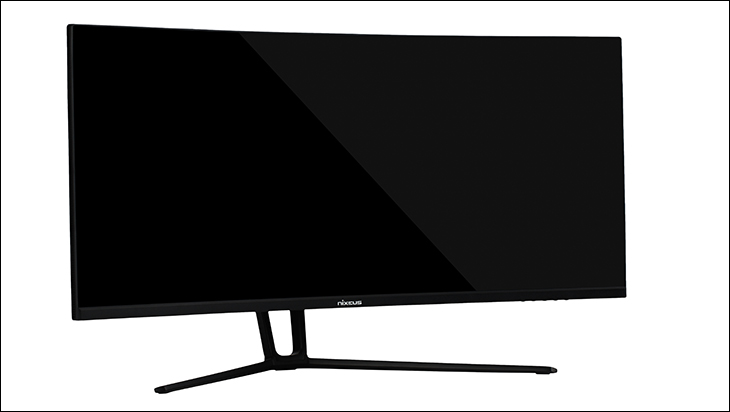
The most obvious feature of the Nixeus NX-EDG34S is its dimensions and curvature. 34-inchs of diagonal viewing area is a lot, and we mean lot, of screen real-estate. So much that if this was a flat monitor some would find it too much. Our eyes are not flat and how we see the world is also not flat. With 34-inches you would have sit way back to get the full experience… and it would not be as immersive.
This is key to understanding the EDG 34S, as PC Gaming monitors are all about immersion. This is why the Nixeus NX-EDG34S is curved. The radius of the curve is also unusual, some may even say controversial but a lot of science is behind this R1500 curve. The ‘R’ stands for radius and the 1500 stands for millimeters. Basically, imagine a 3M beach ball. That is the curvature of the Nixeus NX-EDG34S’s screen. This sounds rather small compared to say a R1800 (3.6M diameter circle) but makes sense when you realize that the rule of thumb is the R rating also roughly equates to maximum viewing distance… or over 9.8 feet distance (vs 11.8 feet for a R1800).
Furthermore, a good rule of thumb of curved monitors is one quarter to about half of the maximum distance is the ‘sweet spot’ for them. Since the Nixeus NX-EDG34S is not meant to hang on a wall and rather sit on desk… this sweet spot of 2.5 feet to 4.9 feet is also the usual distance between our eyes and the monitor(s) siting on our desk. In our case our monitors are usually a bit over 3 feet – right in the sweet spot – making the Nixeus NX-EDG34S tailor made for our gaming experience. Just as it will when on most desks.
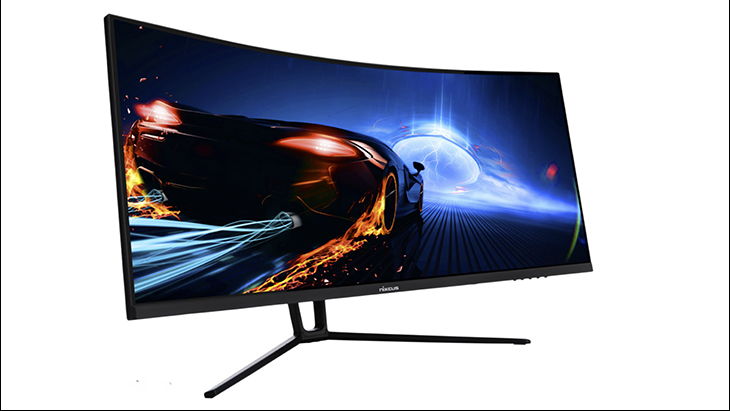
When you have the Nixeus NX-EDG34S in this sweet spot the edges of the monitor will engage your peripheral vision and make it almost as if you are in the action – not playing it on your computer. That is the epitome of what a monitor should bring to your gaming experience.
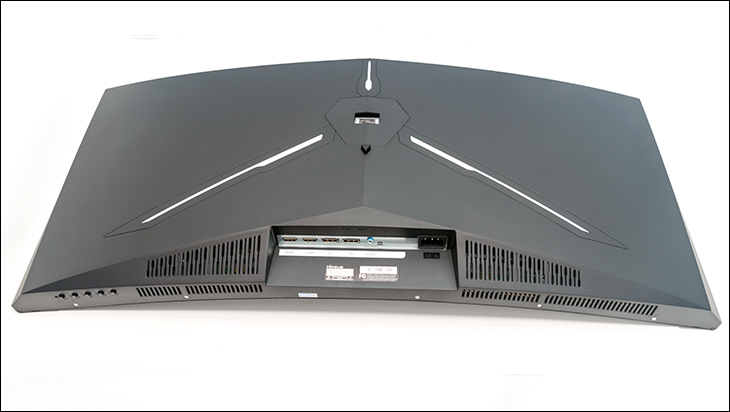
The downside to a R1500 is the curve is more extreme and thus the overall footprint is bigger than a R1800 based monitor. The Nixeus NX-EDG34S curve means that the center it is about 55mm further away than the edges. Since, at its thickest point, the Nixeus NX-EDG34S is also about 85mm this means the monitor alone has a front to back footprint of 140mm or about 5.5inches. On its own this is pretty decent, but the stand also adds to the footprint. Put bluntly, this monitor’s overall footprint is about 32inches wide, 19 inches high, and has about 11.5 inches of depth. That is a lot of desk to dedicate to a monitor.
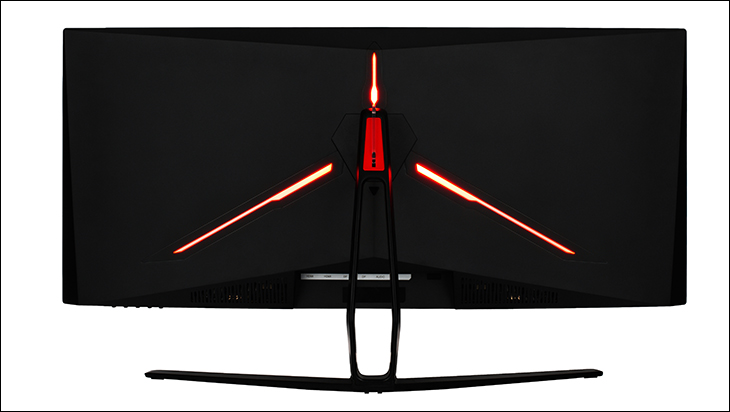
On the positive side the stand is very pretty which nicely adds to the overall look and feel of the Nixeus NX-EDG34S. The combination of LEDs on the back of the panel (in a triangular pattern) with the glow bar built into the stand itself, with the angular looks of both the stand and monitor make for a rather ‘cool’ looking monitor. This wow, or cool, or aggressive, factor is not just there for aesthetics. Instead form followed function.
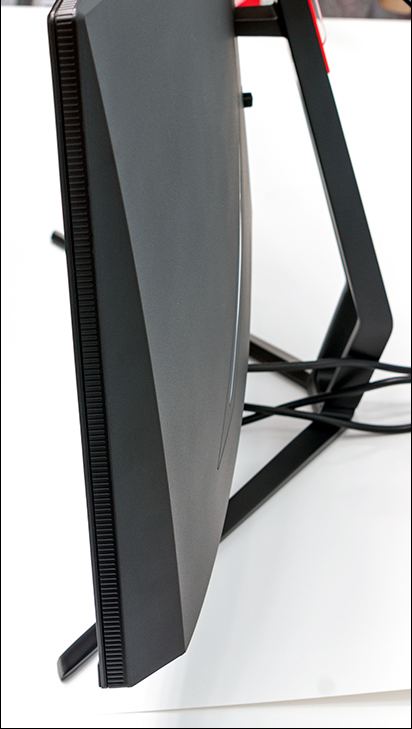
To keep the center of balance as low as possible the electronics for the monitor are located at the back-rear portion of the monitor. Since there is no need to make the entire back of the monitor this thick, Nixeus’ design team took an angular approach and created multiple triangular shapes. To help blend them they added in relief cuts… and the end result is a robust looking monitor that is aggressive without being almost satirical in its appearance.
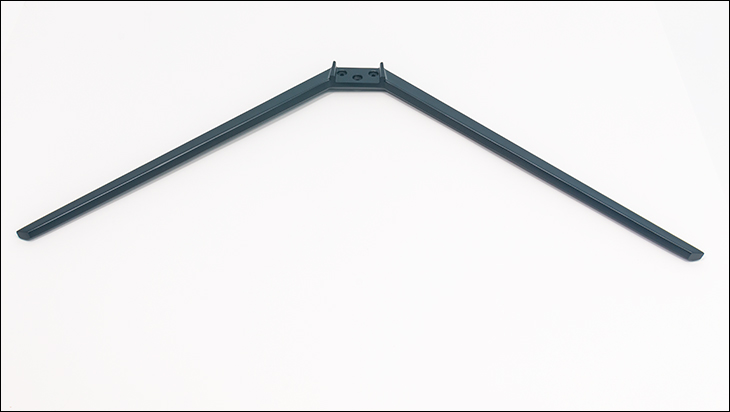
The stand may lack any vertical adjustment (instead it raises the panel about 4 inches off your desk), but does offer a couple important features. First is it offers tilt adjustment of a few degrees of positive tilt to about 15-degrees of negative tilt. It is also rock solid. The two angular feet spread out a full two feet from tip to tip. With only 4’ish inches of panel overhanging each end, you can bump into the side of this 23ish pound monitor and it will not tip over.
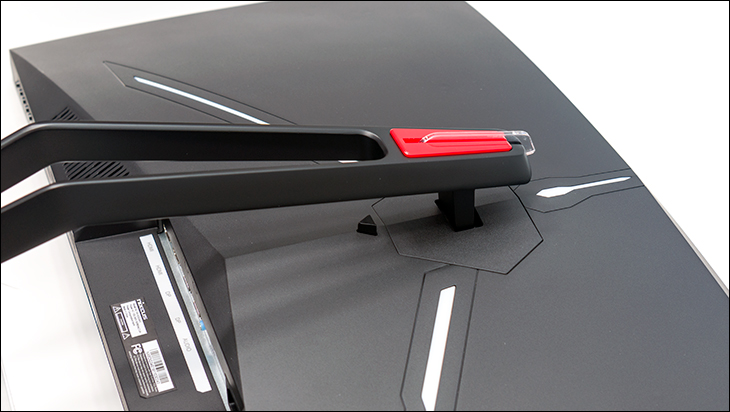
Since the stand sits a full 110mm behind, and 40mm in the front you can bump into the front or the back of the EDG 34S and it will not flop over. This is something that not all 21:9 monitors can boast.
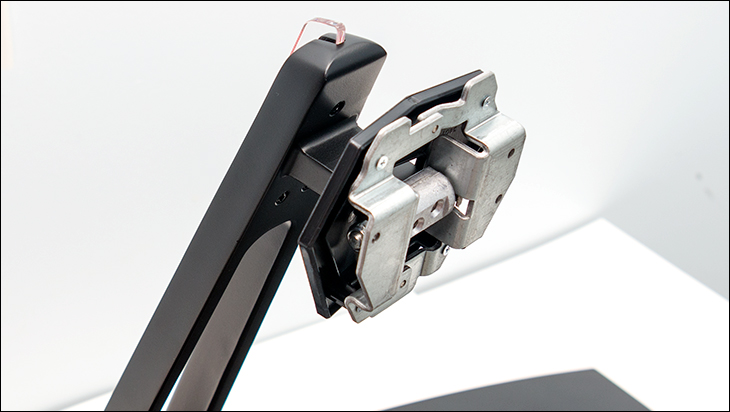
Of course, if you need vertical / ‘height’ adjustment Nixeus is releasing a ‘premium’ version of NX-EDG34S series that offers a more advanced stand at the same time it drops the ‘S’ from the end of the model name.

A monitor is only as good as the panel it depends on to actually display all that gaming goodness. With cheap monitors the way the manufactures get a high refresh rate is by relying on TN (Twisted Nematic) panels. TN are ‘good enough’ for entry level usage but their color reproduction abilities (especially blacks) are sub-optimal to say the least. When we first heard of the Nixeus NX-EDG34S and its asking price we honestly thought it was going to be TN based. It is not. It however is not In-Plane Switching (IPS) based either.
Instead Nixeus has taken the road less travelled and opted for Vertical Alignment (VA) technology. VA is similar to IPS but how it does things is different. As the name suggests VA panels have their liquid crystals… vertically aligned or perpendicular to the substrates above and below them. When a voltage is applied, they tilt to let light through. With IPS these crystals are parallel to the substrates. When a voltage is applied… they rotate. This is why IPS is usually slower than TN, but in return can produce much, much better blacks (that are actually black and not just dark gray).
Since VA panels have their crystals tilt they are nearly as fast as TN (in the Nixeus NX-EDG34S’s case that is a 4ms response rate), yet they are also produce blacks that are much closer to IPS’s darn near penta-Black black levels. Now with that said this particular Samsung VA panel is not perfect. It is a very good 8-bit panel (aka 24-bit), but its color reproduction is nowhere near what a 10-bit (aka 30-bit) IPS panel can do. Photos and video will not look as good as it does on a professional grade 10-bit IPS panel. Of course, for games which have a color pallet that caters to the lowest common denominator… 8-bit S-VA is a good compromise. Yes, there are IPS panels which are ‘overclocked’ to hit 120+ Hz, but finding a 10-bit IPS that can do 144Hz and do it for years and years… well they cost more than a kidney on the black-market. Instead this Samsung VA panel is a good compromise with few down sides for PC Gaming enthusiasts.
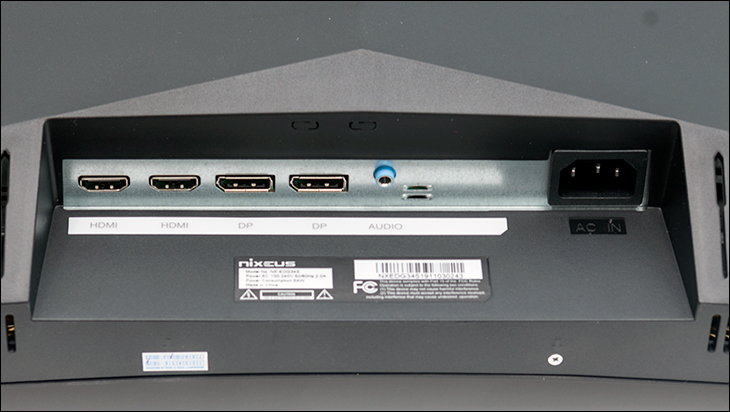
Also on the positive side, the Nixeus NX-EDG34S is a nearly borderless style monitor… and thus the ‘edge’ or ‘EDG’ in the name. The top and two sides are literally only a few millimeters thicker than the panel it covers. This too adds to the immersion of game play. Of course, the bottom of the panel is fairly thick, but this is because it is has actual physical buttons for the OSD. We are not fans of virtual buttons, and these (albeit small) buttons are tactile and tell you precisely when they are actuated via both an audible click and a nice physical sensation. This makes navigating the OSD a breeze. The only thing we would have liked to have seen is the legend for what buttons does what be outlined in white, glow… or do something to make reading them a touch easier. On the positive side, this lack of color in your peripheral vision reduces distractions and improves gaming immersion. Yes, this is a reoccurring theme of this monitor. Basically if any feature could potentially reduce the owners gaming enjoyment, it was modified to eliminate that potential negative.
In this vein, a PC gaming monitor not only has to be immersive via good color reproduction and low latency, it also has to do everything in its power to ensure there is not judders, screen tearing, or blurring of the images (or at least none that were not artificially put there by the gaming engine – e.g. “ambient occlusion”). Right now there are two ways of ensuring that: NVIDIA’s proprietary, closed source G-Sync, and AMD (and VESA backed) FreeSync. The G-Sync module would have added about one hundred dollars to the build cost of this monitor, so instead Nixeus went the FreeSync 2 route.
To be specific, the Nixeus NX-EDG34S supports FreeSync 2 and LFC (Lower Frame rate Compensation). In this instance it means the monitors refresh rate can dynamically go from 48 frames to 144frame per second… or anything in between. All in real-time. All to ensure there is nothing but buttery smooth frame rates. In testing, the results are impressive. Not as impressive as 30 to 144, but darn good. Good enough that with LFC’s frame rate doubling you do not need a thousand dollar video card. You just need one that can push 4.95 million pixels and refresh those pixels as close to 48 times per second as possible. Anything over that is a bonus and simply makes the experience better. Not a mandatory requirement to enjoyable gaming. In fact, as long as it can refresh more than 36 times a second LFC will make it look like a more powerful card is doing the grunt work.
In the ‘bad old days’ of the ‘standards wars’ buyers of the Nixeus NX-EDG34S would have been locked into AMD only video cards. Thankfully… NVIDIA ceded all but the premium end of the market and has opened up their drivers a smidgen. So, if you have a NVIDIA card and are using the latest (post 417) drivers you will get adaptive sync capabilities – which is roughly speaking NVIDIA’s version of variable refresh rate. AMD video cards are optimal, but if you have a high end RTX card there is zero reason to sell it.

To help ensure that you do not need an uber pricey video card, Nixeus has given their NX-EDG34S both DisplayPort and HDMI options. Specifically, two of each. Of course, with HDMI you are going to be limited to 100Hz and the DisplayPort’s are 1.4 not 2 compliant. DP 1.4’s bus of ~25Gbps (real world) offers more than enough bandwidth to push this panel to 144Hz (21.4ish Gbps), but you are not really going to get true 4:4:4 HDR over a DP1.4 bus at this resolution. Of course… HDR and 8-bit is not really needed. HDR really only shines with 10-bit panels. The Nixeus NX-EDG34S is HDR enabled so you can push the black range nicely with it, but if your Windows 10 Operating System goes squirrelly and you have to disable HDR (like so many of us have to do… randomly) you will not be missing much. HDR color really does not matter all that much for gaming. In other words, the Nixeus NX-EDG34S really is meant for the average PC gaming enthusiast. Not just rich enthusiasts. If you positively, absolutely need 4:4:4 HDR gaming… buy a 10-bit IPS, DP 2 based model and sell a kidney, an arm, and possibly a leg to afford it (though we would recommend it be someone else’s arm/leg/kidney and not your own).
The other minor issue with the ports is their layout. They are vertically orientated and patience will be needed in order to plug them in if you are doing int ‘’blind”. A more optimal solution is to turn the monitor around, plug in the cables and then proper orientate the EDG 34S on your desk… and then plug it into the PC. On the positive side, there is a lot less stress on the DP and HDMI ports themselves as 90-degree ports have been known to develop stress fractures in their soldering from just the weight of the cable constantly stressing it.
Overall, the Nixeus NX-EDG34S does not look, act, or even feel like a cheap monitor. It just does not cost as much as one would think such a grade of monitor ‘should’ cost. Color us impressed.
